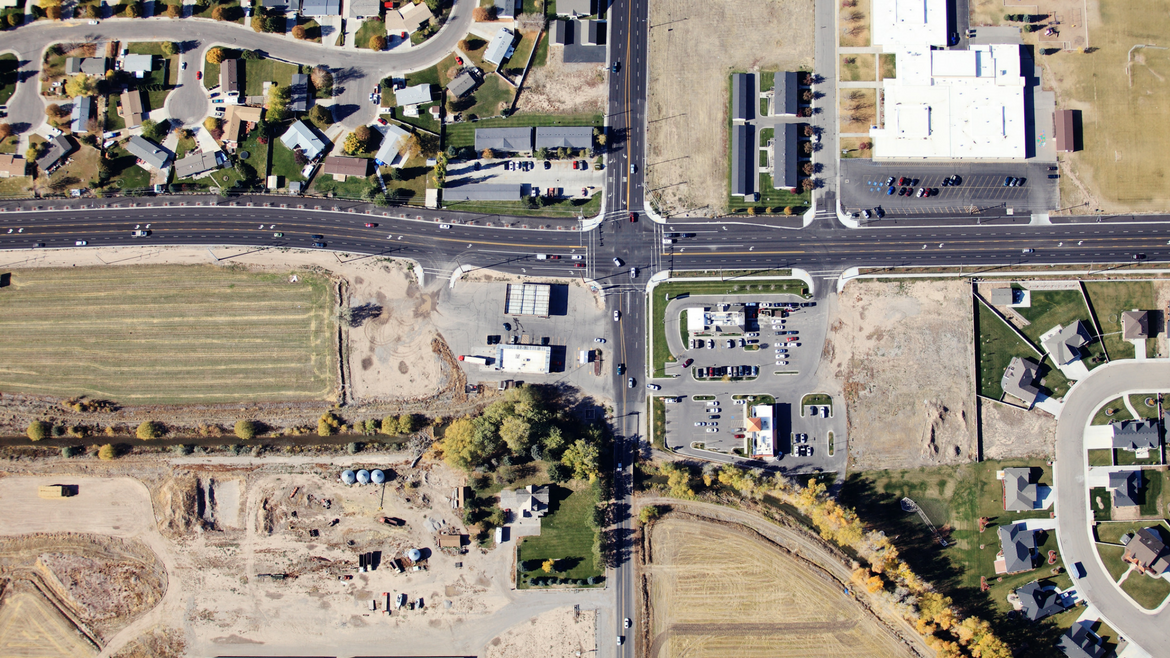This is the fifth in a series of Q&As conducted by The Economist Intelligence Unit and commissioned by the United Nations Foundation to explore advancements towards meeting the Sustainable Development Goals (SDGs), that is, the 17 UN-backed objectives that more than 190 countries agreed to prioritise in 2015. These targets include improving infrastructure, education, health and industrial innovation, as well as reducing environmental degradation.
Here The EIU interviews Jaime Lerner, former mayor of Curitiba and governor of Paraná about infrastructure development as a driver of social and economic change. As a well-known architect, urban planner and three-time mayor of Curitiba, Brazil, Mr Lerner is credited with reinventing the city into one of the world’s most environmentally friendly metropolitan areas. With an emphasis on public-use infrastructure, Mr Lerner replaced congested roadways with pedestrian thoroughfares and efficient, affordable bus routes that shuttle more than 2m riders a day. He is credited with establishing innovative programmes, such as recycling services in the city’s favelas, that helped foster public buy-in for environmental initiatives. Mr Lerner also served twice as governor of Paraná and facilitated widespread social and economic transformation of urban and rural areas in the state.
Mr Lerner is the former president of the International Union of Architects. He has received the United Nations Environmental Award (1990), the UNICEF Child and Peace Award (1996), the World Technology Award for Transportation (2001) and the Sir Robert Matthew Prize for the Improvement of Quality of Human Settlements (2002).
__________________
EIU: Infrastructure investment frequently means new roads, not public transit. That is a model you’ve rejected. What is the best way to measure the return on investment of public- versus private-user-focused infrastructure as a means of meeting the SDGs? And what is the role of cities in this process?
I bring to this discussion my experience and belief that cities are not problems; they are solutions. It is a well-established fact that the majority of the world’s population is urban. Cities are engines of economic growth. They are responsible for about 70% of global greenhouse-gas emissions, and they are the level of government closest to the people. Therefore, it is in cities that the most significant contributions towards meeting the SDGs can be made.
The challenges of mobility, however, go beyond choices of modality, such as deciding between investment for highways or railroad tracks. Cities should be viewed as integrated structures of life, work and mobility, and local governments must have a plan for growth to attract public and private investment. This vision must be developed collaboratively to ensure transparency and accountability.
Urban planners should not segregate urban functions in their conception of the city. In other words, they should not isolate housing from jobs, commerce and other services, and vice versa. Separation of urban functions generates displacement by requiring citizens to travel long distances for services that could otherwise be addressed by a more integrated and compact urban form.
I like to use the metaphor of the turtle to illustrate the need to integrate urban functions and mobility. The turtle carries her life with her wherever she goes; she lives, works and moves within her shell. The shell resembles an urban landscape. If we break her shell into pieces, the turtle will die. And this is what has happened to many cities. It is not reasonable to have to take the car to buy bread at the store or to travel for employment. All these needs should be met at walking distance. The same goes for elementary schools, day-care centres, parks and other public spaces. These should all be parts of the integrated life of the city.
EIU: Given the massive price tag required to fund infrastructure—coupled with potential reluctance from taxpayers, wary banks and credit-crunched cities—what are the most effective financing tools to incentivise infrastructure investment?
Lerner: Investments in infrastructure often have returns in the long run. As a result, clear priorities and continuity in the associated policies are key incentives to encourage financing from public and private sectors. The sustainability of these investments is also connected to consumers, or the people who pay to access these services. Poor service quality, for example, may potentially discourage users from using public transportation.
Another aspect is the adequacy of technology. Subways may be excellent means for commuting, but they are financially inaccessible to the great majority of cities worldwide. In the early 1970s, Curitiba was able to establish a plan for growth that combined mixed, high-density land use and road networks to create dedicated bus lanes. Forty years later, this transit network is a city trademark and the backbone of its urban development and mobility structure.
Another example is Curitiba’s urban drainage solution. Many city parks were created as flood-control mechanisms. The conventional approach was to channel rivers and encase them in concrete. Curitiba chose to maintain natural river routes and protect riparian areas and forest remnants. The city created containment basins and other simple types of infrastructure such as bike lanes. As time went by, both the market value of the properties and the base for taxation revenues in the surrounding areas grew.
We must find ways of using the incredible strength and vitality of the private sector in favour of the city. That is, again, why it is necessary to have a vision for the future that is debated and defined openly in society. This facilitates transparency in the community’s goals and the mechanisms used for urban development.
EIU: Infrastructure often reflects social and/or geographic inequity. Low-income or rural communities may lack clean water–delivery systems, for instance, while richer cities boast updated treatment plants. What is needed to close these gaps?
During my time as governor, Paraná was a state that had experienced uneven development. We attempted to improve the accessibility and connectivity of the main urban hubs distributed throughout the state, strengthening them as anchors of commerce, education and culture. We organised the concession of roads that linked these areas and improved their quality and safety. We ensured the availability of adequate channels to transport agricultural products to export areas and maximised the opportunities for industrialisation further inland. The idea was that every small municipality would not be more than two hours away from one of these hubs. With time, Paraná grew its competitiveness and GDP.
Other solutions required practically no infrastructure. The Baía Limpa (Clean Bay) programme targeted fisheries and their communities to improve water quality. As part of the programme, fishermen could sell whatever they caught. When the fish didn’t bite, the government would buy whatever garbage local residents “fished” out of the bay. As the bays got cleaner, water quality improved and more fish were available.
Another example is the Jogos Mundiais da Natureza, or the World Nature Games, organised in the Foz do Iguaçu and Itaipu region. The event is like the Olympics but features sports that use the environment’s natural assets as infrastructure, such as sailing, canoeing, rappelling, biking and so forth. It was an incredible experience and a major boost for the tourism industry in a region with practically zero infrastructure investment.
Finally, the Comboio Cultural programme sent a cultural envoy to travel across the state in retired buses. This group brought ballet, music, theatre, opera and literature to hundreds of small cities in Paraná that would otherwise have no access to these artistic endeavours.
My point with these examples is not to minimise the need for investments in infrastructure but to illustrate that a lot can be done through a more creative approach. Let us not forget that many “crimes” against the quality of life in cities, such as the “Minhocão” (a major elevated highway in São Paulo) and similar examples plentiful in North America, were built in a time of resource abundance.
EIU: In your experience as an elected official and architect, who should take the lead on infrastructure renewal?
I do not believe that any group has a monopoly on leadership and good ideas. Incentivising action requires input and resources from all sides. Architects should be unafraid to propose bold, new projects. And governments have mandates and ampler means to command investments at scale. They also have frameworks like the SDGs to guide them.
One good example of multi-sector collaboration is the creation of Curitiba’s integrated transit network. The design and integration of the network with the city’s development framework was led by the government. Its implementation was a joint effort by several stakeholders. The city provided dedicated lanes, stops and terminals and monitored the network. Private bus operators invested in the fleet, personnel and other operational aspects, and the fare charged for service was their return on investment. Remuneration, however, was accounted for by kilometres travelled, not by passengers transported. This distinction helped connect communities in more peripheral areas of the city, which, in Brazil, are usually the poorest.
Importantly, the better the standard of service, the more people choose to use it. The transit system started transporting 20,000 passengers per day. Nowadays this number is greater than 2m.
EIU: What is a realistic time frame for cities hoping that infrastructure investment and urban planning will revitalise their communities?
I truly believe that any city can improve its quality of life in two or three years’ time. A few years ago, I published a book dedicated to the idea of ”urban acupunctures”, or quick, strategic interventions that help create new synergies in cities. These solutions seek to heal degraded or obsolete areas and transform them into sources of joy, identity and self-esteem for the local population. In one of Curitiba’s abandoned quarries, for instance, the city created an amazing open-air concert hall—the Pedreira Paulo Leminski—that has hosted Paul McCartney and José Carreras. The venue takes advantage of the stone walls left behind by the mining process. Creativity starts when you cut one zero from your budget, and sustainability when you cut two!
Additionally, these projects can grow over time. Curitiba’s transit network started with one line, but its success demonstrated the potential of additional investment. The system was incrementally expanded and improved upon but still guided by a comprehensive, long-term vision.
A more inclusive society is only possible when communities embrace diversity and respect each other’s identity. These are key assets of cities, which are historically the places where “differences” meet. Indeed, the ability of cities to spark creativity and innovation is derived from encounters and even friction among differences. Security and safety are not fostered behind enclosures and fences but in openness and tolerance. Public spaces—streets, parks, squares—are the city’s open-air “living rooms” and true bastions of solidarity. As it has been said since the Middle Ages, “The city air will set you free.”







